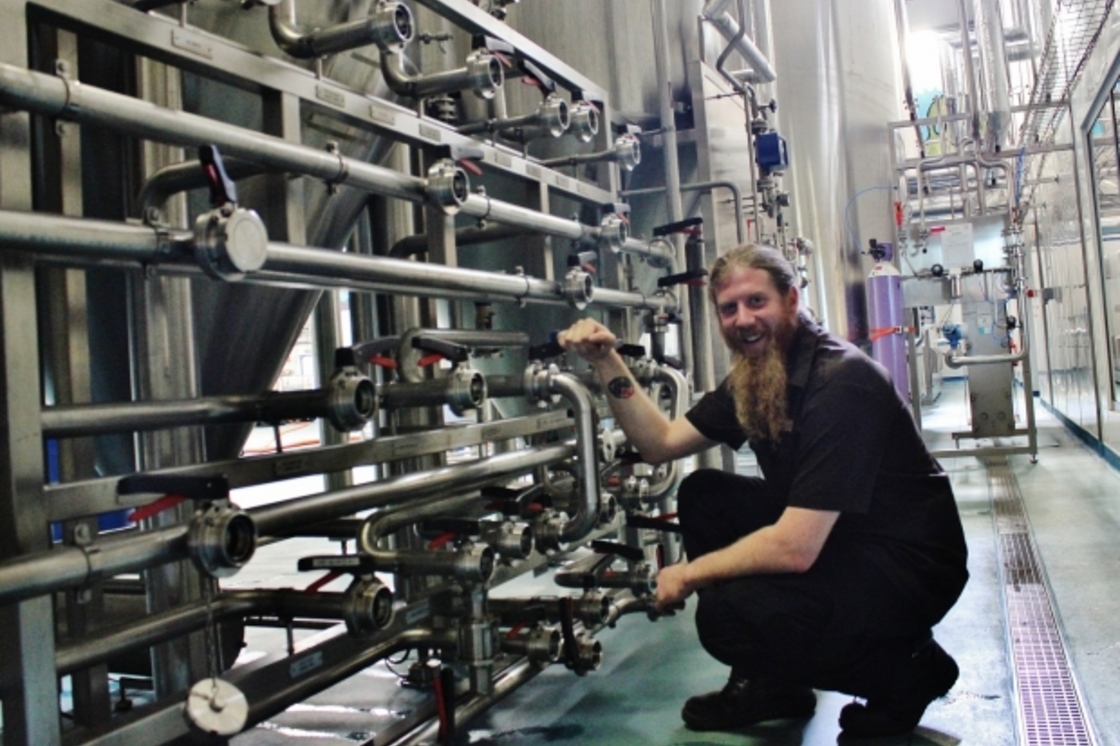Brew Team Confidential: Yeast

We’ve christened 2013 the year of yeast.
Put simply, without these kickass, little one celled organisms we wouldn’t have beer.
Now’s the time to start getting evangelical about it and understanding how different strains have a massive impact on what’s in your glass and how it got there.
We caught up with some of our brew team to find out what types of yeast are currently floating their boats:
Stewart
"Ardennes is a really versatile strain of Belgian yeast. A lot of Belgian yeasts can be heavy on fruity or spicy esters but Ardennes is a lot more balanced flavourwise. We put it to use in Bashah, our collaboration with Stone, and we were surprised how well it worked. What could have been an agressively hoppy dark beer ended up being really nicely balanced with the yeast rounding out all the big flavours."
Ryan
“My preferred type of yeast is Belgian Saison because it’s just so flavoursome and it imparts a really distinctive taste. It’s a traditional yeast, but it’s spicy and exciting too. And it goes with my favourite style of beer so it’s an obvious choice for me.
"Unsurprisingly Belgian Saison is used in Saison beers, like our Electric India, which we made at our shareholder brew day!”
Charlotte "Brettanomyces - sometimes referred to as 'Brett' - is a really interesting yeast as it gives a quite a recognisable flavour to the beers it’s used in; some people think it tastes like a barnyard or old leather, which doesn’t sound nice, but it really is in certain types of beer.
"Brettanomyces - sometimes referred to as 'Brett' - is a really interesting yeast as it gives a quite a recognisable flavour to the beers it’s used in; some people think it tastes like a barnyard or old leather, which doesn’t sound nice, but it really is in certain types of beer.
"It can be used for primary or secondary fermentation, meaning that the beer is either wholly fermented using this yeast or it is added later to give flavour without being overpowering. Brettanomyces is used in lambics and guezes including the Cantillon Gueze 100% Lambic which is currently a guest beer at our bars.”
Russell “American Ale Yeast has quite a clean fermentation and I like that. It doesn’t give a huge amount of flavour to the beer, which I think is great because it allows other flavours – like hops - to really dominate! Sierra Nevada’s Torpedo Extra IPA is a great beer to experience American Ale yeast in action.”
“American Ale Yeast has quite a clean fermentation and I like that. It doesn’t give a huge amount of flavour to the beer, which I think is great because it allows other flavours – like hops - to really dominate! Sierra Nevada’s Torpedo Extra IPA is a great beer to experience American Ale yeast in action.”
John  “Belgian Wit has a spicy, peppery flavour so it’s right up my street. I’m a fan of it because the yeast dominates the beer more than the hops do and I love the Belgian and European beers it’s most commonly used in. Belgian Wit is used in Hoegaarden’s Celis White and pretty much all wheat beers.”
“Belgian Wit has a spicy, peppery flavour so it’s right up my street. I’m a fan of it because the yeast dominates the beer more than the hops do and I love the Belgian and European beers it’s most commonly used in. Belgian Wit is used in Hoegaarden’s Celis White and pretty much all wheat beers.”
Dave “I’m a fan of the humble Scottish ale yeast. What’s so good about it is that it does all the nitty gritty work in the background while leaving a clean flavour so the brewer can show off what’s been done with the rest of the recipe. It’s a bit of an unsung hero…we should really hold a parade in Ellon for it to give it the recognition it deserves.”
“I’m a fan of the humble Scottish ale yeast. What’s so good about it is that it does all the nitty gritty work in the background while leaving a clean flavour so the brewer can show off what’s been done with the rest of the recipe. It’s a bit of an unsung hero…we should really hold a parade in Ellon for it to give it the recognition it deserves.”
As ever, our brew team are waiting to answer your questions on yeast; so if you’re home brewing and need advice or just want to know more, holla us in the comments box.

Join the Discussion
Comments (14)